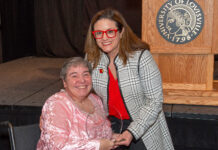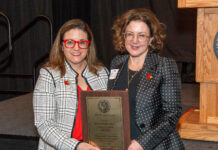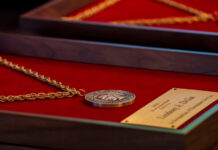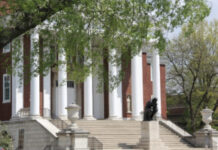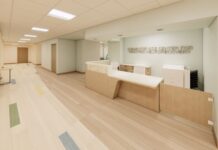The list of construction and renovation projects on UofL’s campuses since 2002 is a lengthy one. According to a list compiled by the Office of Business Affairs, UofL has spent $590 million on 35 capital construction projects since 2002.
The project list ranges from a $470,000 partial renovation of Threlkeld Hall to house Honors Program students to the recently opened $143 million Clinical and Translational Research (CTR) building in downtown Louisville.
The university has become one of the most important economic engines in the region, said economics professor Paul Coomes.
Coomes pointed out that UofL’s economic impact stems from several factors.
One of those, he said, is a dramatic increase in federally funded research over the past decade.
The university’s federal funding for academic research and development in 2008 topped $72 million, and its increase in federal funds was 190 percent between 2001 and 2008, according to The Chronicle of Higher Education in its Oct. 29 issue. The story listed UofL as the second biggest gainer of more than 600 institutions in a National Science Foundation survey.
But the university’s impact doesn’t stop with federal funding, Coomes said.
UofL’s contributions to the local and state economies also are coming from medical discoveries that are leading to commercialization, high-tech businesses and high-paying jobs; new residential facilities that have helped increase Louisville’s population; transformation of brownfield industrial areas around Belknap Campus into sports fields that are an anchor for private sector retail and neighborhood development; and construction of the downtown sports arena, which is happening because pf the success of the university’s basketball programs, the economist said.
UofL is driving progress for the region in terms of enhancing our human capital, medical innovations, launching businesses, improving neighborhoods and transforming downtown, Coomes said.
To highlight UofL’s economic impact, university President James Ramsey recently guided Louisville Courier-Journal editorial board members on a tour of many of the new buildings on the Belknap and Health Sciences campuses.
The investments in research, academic, athletic and student housing construction projects have been necessary, even in a struggling economy, to continue to attract top researchers, teachers and students to UofL, Ramsey told the newspaper editors.
The tour included a look inside the new CTR building, as well as stops in a new Belknap Campus dining facility and the university’s renowned clean room in the Belknap Research Building.
One C-J editor commented that Belknap Campus had been transformed since he was an undergraduate at UofL.












